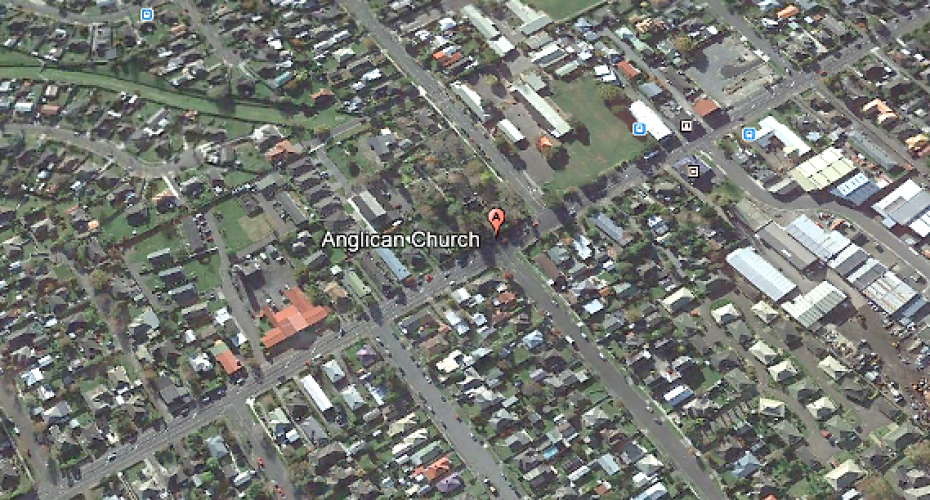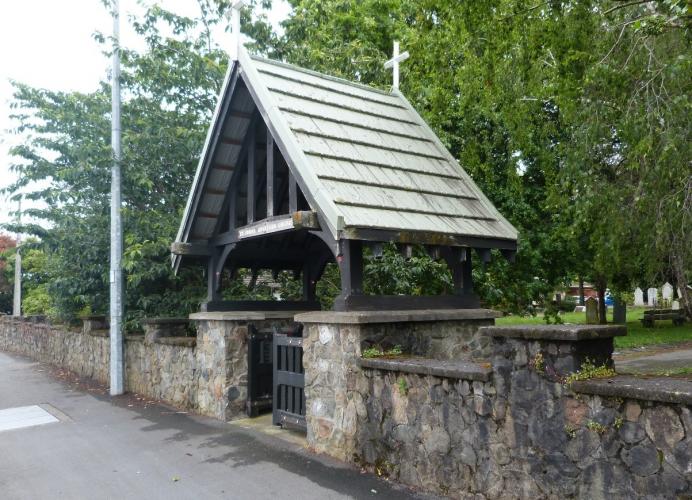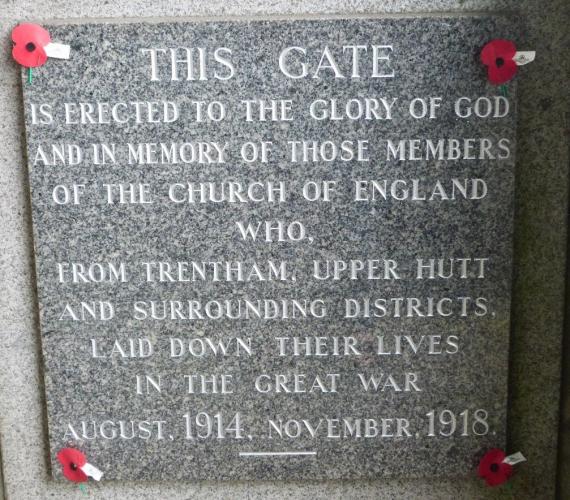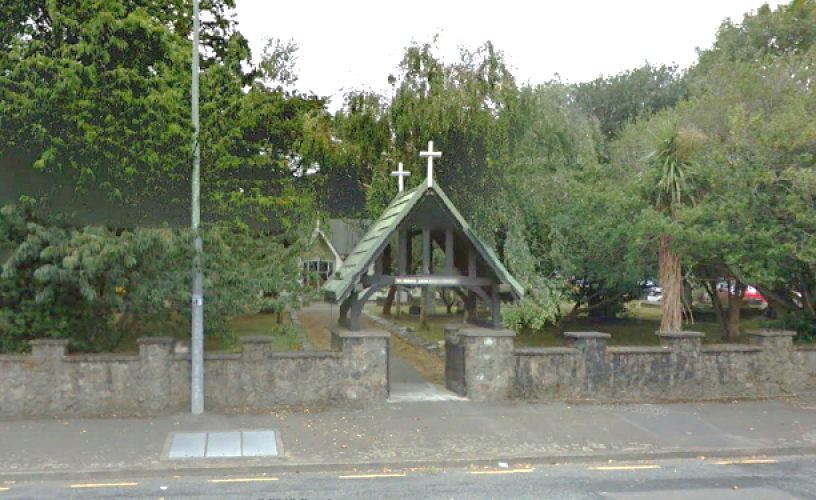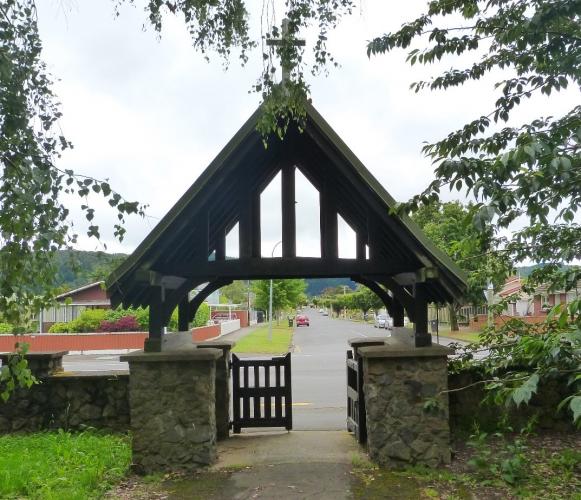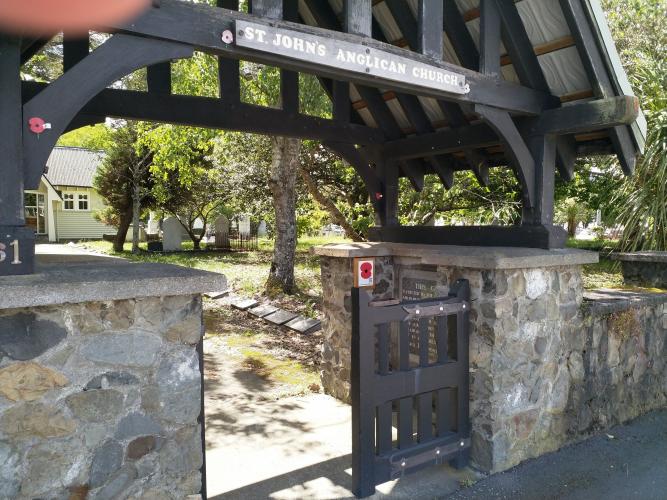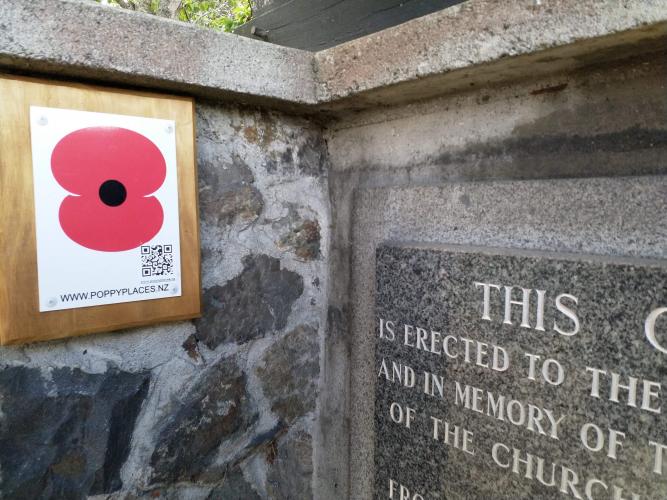211 St Johns Lych Gate Upper Hutt, footpath view 2018.png
Reason for the name
The St John’s Anglican Church Lych Gate was created as a war memorial to local Anglican citizens after World War 1.
Historically Upper Hutt has had a number of different memorials and sites where the ANZAC Day Dawn Service has been conducted. The first was at the Lych Gate at Fergusson Drive entrance to St John’s Anglican Church. The plans for the St John’s Anglican Church Lych Gate were originally drawn up in 1904 but it wasn’t until after the Great War and its impact on both the local community and especially the St John’s parish that the project took impetus. The gate was generously funded by local donations. The foundations were constructed from stones carried up from the Hutt River by local parishioners, and the gates and roof were built from imported Australian jarrah timber, with the memorial stone being of Australian marble, this gave the memorial a uniquely ANZAC flavour.
Authors: Wayne Myers UH RSA and The Poppy Places Trust
The gate was formally unveiled in 1925, with the official marble plaque stating: “This gate is erected to the glory of God and in memory of those members of the Church of England who from Trentham, Upper Hutt and surrounding districts laid down their lives in the Great War August 1914 -November 1918”
It was after the unveiling that this Lych Gate became the focal point for local Upper Hutt ANZAC Day services and was continued until about 1939 when services were relocated possibly due to attendees blocking Fergusson Drive, the main egress to and from the Upper Hutt city centre. It may have relocated to the King Street area outside of the UH RSA clubrooms.
In learning of this history of the St John’s Lych Gate and the link to the Upper Hutt ANZAC Day services being held there, the President of the UH RSA, Tom Cormac decided that the UH RSA would rekindle their association with the church. On ANZAC Day 2017, a formal gathering was held in the churchyard with the UH RSA laying a wreath at the foot of the Lych Gate memorial stone. This is now a formal part of each ANZAC Day service in Upper Hutt.
The word lych survived into modern English from the Old English or Saxon word for corpse, mostly as an adjective in particular phrases or names, such as lych bell, the hand-bell rung before a corpse; lych way, the path along which a corpse was carried to burial (this in some districts was supposed to establish a right-of-way); lych owl, the screech owl, because its cry was a portent of death; and lyke-wake, a night watch over a corpse.
It is cognate with the modern German Leiche, Dutch lijk and lichaam, West Frisian lyk and Swedish lik, all meaning "corpse". There is also a German phrase for one who could talk to the dead as a medium or Leiche Zunge. The word also appears in Old English and pre-Christian Galway as a "Lich Tongue" – referring to one thought able to appease the spirits of upset ancestors and spirits returning to former abodes and creating turmoil on All Hallows' Eve (Halloween or Samhain).
In the Middle Ages, before mortuaries, and at a time when most people died at home, the dead were placed on a bier and taken to the lychgate where they remained, often attended against body snatchers, until the funeral service, which may have been a day or two later. The lychgate kept the rain off, and often had seats for the vigil watchers. Bodies at that time were buried in just shrouds rather than coffins. At the funeral, the priest conducted the first part of the service under the shelter of the lychgate.
Lychgates consist of a roofed porch-like structure over a gate, often built of wood. They usually consist of four or six upright wooden posts in a rectangular shape. On top of this are a number of beams to hold a pitched roof covered in thatch or wooden or clay tiles. They can have decorative carvings and in later times were erected as memorials. They sometimes have recessed seats on either side of the gate itself, for the use of pall-bearers or vigil watchers.
The body rested inside the churchyard, so the gates themselves should be under the edge of the roof, between the end columns, rather than in the centre as is usually the case with modern lychgates.
The gateway was part of the church. It was where the clergy met the funeral party and where the bier rested while part of the service was read before burial. It also served to shelter the pall-bearers while the bier was brought from the church. In some lychgates there stood large flat stones called lich-stones upon which the corpse, usually un-coffined, was laid. The most common form of lychgate is a simple shed composed of a roof with two gabled ends, covered with tiles or thatch. At Berrynarbor, Devon, there is a lychgate in the form of a cross, while at Troutbeck, Westmorland, there are three lychgates to one churchyard. Some elaborate gates have chambers over them.
Most were built from around the mid-15th century although some date from earlier, including the 13th-century lychgate of St George's churchyard in Beckenham, South London, claimed to be the oldest in England. Several new examples were built to mark the new Millennium, such as that at Lenton, Lincolnshire.

